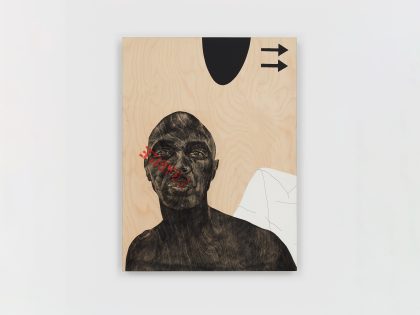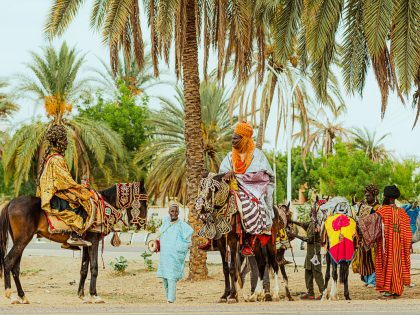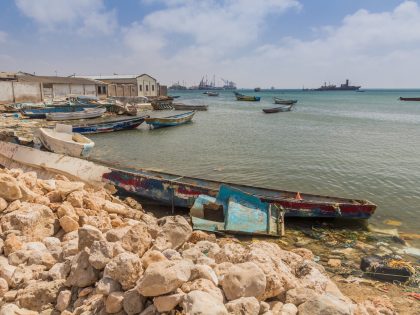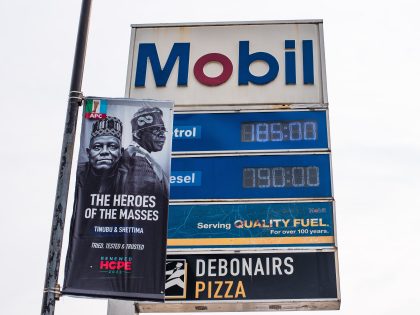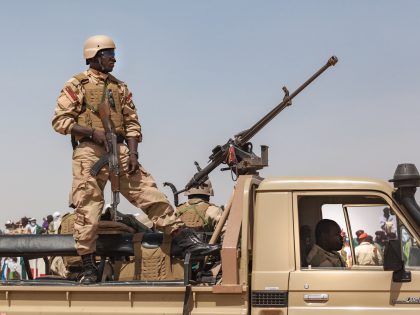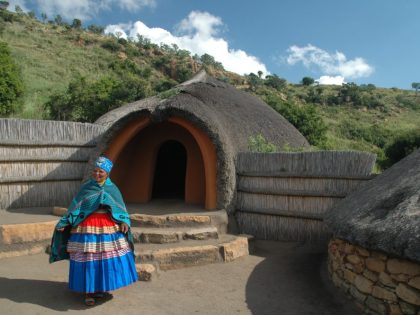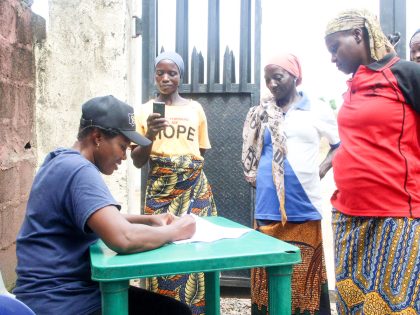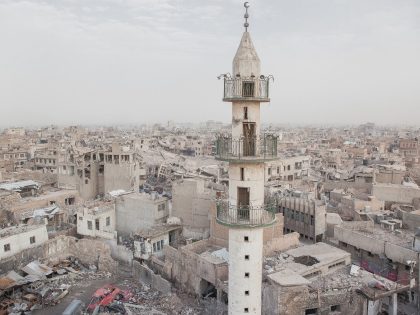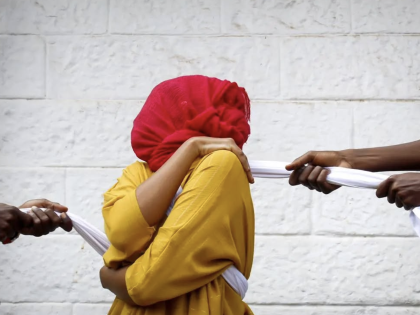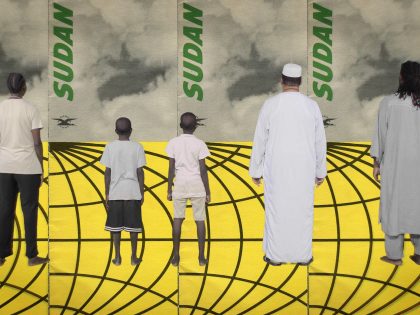The world of photographer Osaretin Ugiagbe
A Nigerian immigrant to the Bronx, New York, Osaretin Ugiagbe documents the lives of his friends and strangers on the streets.

Since he was ten years old back in Lagos, Osaretin Ugiagbe had been casually taking pictures. Using the family camera he would capture scenes from day-to-day life in the house, the neighborhood and thought nothing much of it. But from 2011 as a painter, and now living in the Bronx, he began feeling a yearning to make photographs. He started taking photos of friends; strangers on the streets and to document life around him. It was a 2012 trip to the Gordon Parks exhibition at the Schomburg that would serve as a catalyst into deliberate a photography practice.
“I remember seeing that exhibition and it all clicked” he said “the kids playing by the fire hydrant or by a fountain, and the natural composition had a very vivid, and very life-like effect. I found it to be very profound and moving. That is when it all started to click and I thought this is possible; this is what I can do.”
A collection of his photography and painted works are part of a show “Unbelonging,” at the Bronx Documentary Center on view until August 13th. “It is a diaspora feeling,” Ugiagbe explains about the show’s title, “it is a befitting title with the way things are going politically. Yet it also transcends race, gender, religion and politics.”
There tends to be a motion about the figures in his photos, even though they are static. “There is something I am looking for, something that I want to invoke or that I want to portray in these images even though I like them to be documentary. So while I am not controlling what is happening, the photographs I get the most fun out of are the ones where it is almost like I am using my mind to tell people what to do or painting with my imagination.”
They are also in black and white, something he attributes to the influence of old masters like Gordon Parks, Vivienne Maier and Malick Sidibe, and the timelessness and simplicity of the format.
“It cuts through the noise and takes you straight to the point without any distractions you can get from color. So with black and white I find it is much easier for one to convey using space, light and shadows.”
Ugiagbe broke down some of his own favorite photos for us:
***
This park is nearby my house in the Bronx, in Soundview. That was my first time meeting that kid and he was called Country. All the other kids kept calling him Country because apparently he just came from the South. So here is a country kid in South Bronx, New York. I would be around the basketball court trying to make a photograph with him and he would just give me these insane, very strong defiant poses. I asked why do they call you Country? And another kid answered “because he is from the country fool.” With images like this, I often find myself in my subject. That power, here is a young man who among his peers is the shortest – and we can see him flexing that little muscle – yet there is still this larger than life personality to him. And something very defiant about his gaze. He wants to portray that he is more than just a young man. That is something most people can relate to, and something I certainly feel I can relate to also. I didn’t have to ask him to pose for me or anything. It was just me with a camera and him just pretty much making images.

This is Jenesis Scott. It is a photo I feel says so much about her. For the fact that her name is Genesis, I would always joke with her, call her Exodus. She used to come around the Bronx Documentary Center (BDC). She is a good friend of mine, the neighborhood and the BDC. When I made this photograph I had no idea what it would turn out to be, but she was caught in the moment and what I really liked was just the way it is composed: the deli at the back; her expression, I like the fact that her chest is there but you are not really seeing it. Because I feel like at times photographing women can be quite difficult. Because usually photographers tend to want to show something sexual. And for me I am okay with the idea of portraying women as just themselves, and or without inciting any kind of sexual innuendos. Just looking at a picture of a young lady and just looking at it for the sake of just the image itself. Which is why I personally like this image. There is a bit of a timelessness to it too, with the necklace and the scarf. But if you ask her I bet she will say, “Oh I didn’t have any makeup and didn’t put myself together” but to me it is pure, almost like a state of mind. The little knot on the shoulder I like as well. It could be a wrapper, it could be an African cloth. I think about West Africa, just seeing that little knot there, because I did that a lot. As kids we would put money in the African wax fabric and tie it. So these recognitions even if you don’t know how they seem to appear, do find a way of coming into the images of one’s practice.

This was taken from inside a bus. It is a great example of what really goes into making an image with regards to composition. I also picked this because I can connect it to the next image which gives a sense of being in Lagos in a car. But here we are in New York city in a bus and the image tells so much about life in the Bronx. I had just gotten onto the bus and here a few people were waiting to get on as well. I had no idea this is what I would make, until later when I got back onto my seat and looked back into the camera and saw it with the tilt and it was perfect. But I knew it was the time to use the camera. I felt like this was a great moment because I am on a bus and can see outside, and usually I like to photograph that particular wall with the life-line. Because it is by a bus stop, there are tons of people that usually stand around. The pose of the lady with the glasses for instance, I mean both of them and their gestures says so much. There is a gesture of wanting to survive I feel like, or insistence that we are here.
Apart from just the aesthetics of it, the reflections also in the image itself and that sense of unbelonging, or being somewhere and being the other are present. First of all you are wondering where the photographer is: it could be a train, it could be a bus, it could be a lot of things and this feeling of looking out, looking through.
I didn’t do any post-production so far as tilting. And even the little detail at the very top; you can still see the little grey stains from water on the glass itself, the little white space on the very top corner and the black line also make it for me. It addresses a lot about being in a place, having to look through a lot and gazing at the other.

The previous photo was taken on a bus in the Bronx, and in this one I am back in Nigeria almost doing the same thing. You could see my traveling bag as well in the frame which says “hey I just arrived.” We are in a taxi in Lagos, just after having arrived. There were a bunch of okada guys driving through and it had this magic look, like a movie, with everyone frozen in time. Here the car and the rider are close, but it was great to see the wider scene of motorcycles on the street. There are tons of images I made, just from the back seat and you can see life happening, outside from the taxi window. But with this specifically the composition again is important. It contains the anxiety I felt about everyday life and being back home. Before this, at the airport it was quite interesting seeing folks want to help with your bag. I did document all those things. They are carrying your bag and you think to yourself “oh who are these faces”? They asked why I was taking photos of them and I said I was documenting life. They said “yes, yes take this back to America.” Even without knowingly doing so, this photo and the previous one are speaking to each other. In the Bronx and Lagos.

They call themselves the Johnsons. I was at the bus stop when I saw this group of kids with a guardian. The kid with the mask and the Bronx shirt caught my attention and they were all just full of energy. So I asked the guardian for permission if I could photograph them and she said yeah sure why not. When I faced the kids, they were so intelligent and full of life, they said, “Sir, Sir, is that a camera?” and I said yes it is a camera. “Are you going to take our pictures?” and I said yeah I am going to take your pictures. “Sir, Sir, can you make us famous?” and I said “I don’t know if I can do that but I will try.” They said, “yeah we are the Johnsons, we want to be famous so that way we can show our friends how famous we are.” And they just kept talking about fame. They are Bam Bam (mask), Sincere (arms folded), Najahpier (hat) and Jahray. Since I was like them once, black boys and African boys growing up in the Bronx, I’m drawn to making images of them knowing that they have their own unique stories and there is so much to learn from them. To keep hearing them talk about how they want to be famous and exuding so much life with all this great wisdom and personality was great. I mean look at them. They are a pack of personalities. A few days after this was made I saw them on the bus, and they kept screaming to their mom “Mom, mom, mom that’s the guy, that’s the photographer.” They came up to me and said “Hey mister, hey mister did you make us famous?” I had to speak to their mom and explain that I am a photographer. Because it was very awkward. When I had met them previously they were with a different guardian. So I ended up showing the photograph to mom and she smiled. I saw them a few times during that summer but haven’t seen the Johnsons since.

This is back in Lagos, my neighborhood around Arufa Street before you get to the major highway. This is something I had no idea I made; I was shooting from the hip obviously and this was in the evening while the sun was down. Almost feels out of place. I just wanted to shoot my neighborhood and there was a lady with a veil — I’m not sure exactly what kind – but something magical. There is some dose of mystery to it. It almost feels like she was cut and placed there. Almost feels like she emerged from somewhere. There is something very spirit-like in that image, very angelic in itself. It’s something that when I look at I can’t even put my finger to. It could be an Angel, it could be a spirit, I don’t even know. And obviously the wires, the electrical wires are such a reminder of life in Lagos. This photo is a gift: even though I made it, I feel like it was given to me in a sense.
* “Unbelonging,” at the Bronx Documentary Center runs till August 13th.








